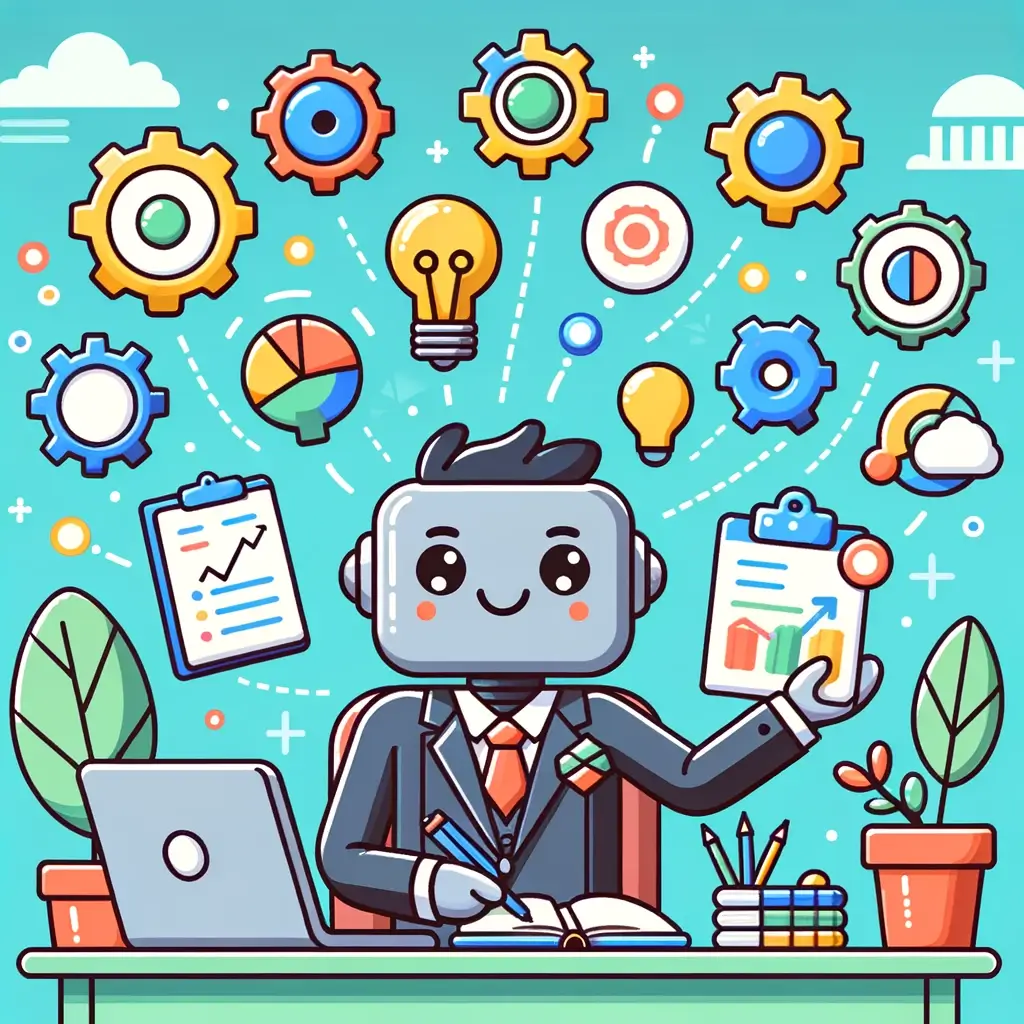In today’s fast-paced digital landscape, tech’s role in customer service strategies is evolving at an unprecedented rate.
From AI chatbots to advanced CRM systems, technology is reshaping how businesses interact with their customers. But how exactly is tech making a mark, and why is it crucial for contemporary companies to stay updated?
Dive with us as we explore the groundbreaking impact of technology in customer liaison, ensuring not just satisfaction but forging lasting relationships.
Harnessing AI for Personalized Experiences
Tech’s role in modern customer service isn’t just about automation—it’s about personalization. With an ever-growing digital footprint, every customer leaves behind valuable data that can be harnessed to curate tailored experiences.
- Chatbots and Virtual Assistants: These aren’t the rudimentary bots of yesteryears. Today’s AI-driven chatbots learn from every interaction, anticipating customer needs and offering solutions before they even arise. The result? Faster resolutions and a touch of personalization, make customers feel truly valued.
- Predictive Analytics: Ever wondered how some businesses seem to know what you’re looking for even before you do? That’s predictive analytics in action. By analyzing customer data, businesses can forecast future needs, making for proactive customer service. Instead of reacting to issues, modern businesses can stay a step ahead.
- Self-Service Portals: Empowering customers is a cornerstone of contemporary customer service. AI-enhanced self-service portals guide users to find their own answers, making the entire experience seamless and efficient. Plus, it gives a sense of achievement to the customer, fostering positive brand associations.
But it’s not just about the tech—it’s about how businesses implement it. The fusion of technology with a genuine human touch is what creates truly memorable customer experiences. In our quest to digitize, we mustn’t forget the human behind the screen, yearning for a connection.
Case Study: Sephora and Personalized Shopping with AI
Sephora, the global cosmetics and beauty retailer, has long been a pioneer in integrating technology to enhance the customer shopping experience. Their use of AI-driven tools showcases the perfect blend of tech and personal touch.
In 2017, Sephora launched the Virtual Artist, an augmented reality tool that allows users to try on thousands of lipstick shades virtually, ensuring they find the perfect shade without ever setting foot in a store. Not just this, the tool learns from user preferences and suggests products that would complement their choices.
But the real game-changer was the introduction of the Color IQ system. Using a device, Sephora staff captures a photo of the customer’s skin. The image is then processed and matched against a database to find the perfect foundation shade from the myriad of options available. This ensures every customer finds a foundation that matches their skin tone perfectly.
Moreover, Sephora’s online platform utilizes predictive analytics. Based on user search and purchase history, it curates product suggestions, anticipating their next purchase. The platform also provides tailored skincare routines for users after analyzing their skin concerns.
The results? Sephora has seen a surge in customer loyalty and increased sales. More importantly, customers feel understood and valued, proving that the right integration of tech can lead to not just sales, but lasting relationships.
Building Trust in a Digital Era
While technology revolutionizes customer service strategies, building and maintaining trust remains a cornerstone.
In a world of digital interactions, how do businesses foster genuine relationships and ensure customer loyalty?
- Transparent Data Use: With concerns about data breaches and misuse, companies need to prioritize transparency. Every time AI collects data, users should be informed and assured about its safe storage and ethical use. Clear and concise privacy policies can pave the way for trust.
- Feedback Loops: Two-way communication is more crucial than ever. Companies must seek feedback and, more importantly, act on it. Whether it’s through AI-powered surveys or human-led focus groups, understanding customer sentiment and addressing concerns fosters loyalty.
- Human Touchpoints: Automated processes might be efficient, but they aren’t always the best at empathy. Ensuring there are human touchpoints in customer service journeys—be it through helplines, live chats, or face-to-face interactions—reminds customers that they’re valued beyond their data.
- Consistent Omni-channel Experience: Customers interact with businesses across various platforms, from social media to official websites. Ensuring consistent, high-quality service across all channels, powered by integrated AI systems, solidifies brand trust and loyalty.
In the end, trust is built on authenticity and genuine care. As businesses embrace AI in their customer service strategies, it’s paramount to use technology as an enhancer of trust, not a replacement for genuine human connections.
The Power of Personalization in Customer Service
In today’s digital landscape, consumers crave personalization. Gone are the days of one-size-fits-all; modern customers expect services tailored to their preferences and needs.
How can businesses harness AI and technology to deliver this personalized touch in their customer service strategies?
AI-Powered Recommendations:
Leveraging machine learning, businesses can analyze customer behavior and purchase histories to offer product or service recommendations. Think of how streaming services suggest shows based on viewing habits. This not only boosts sales but also enhances user experience.
Dynamic Content Display:
AI can adapt website content or app interfaces based on user preferences and past interactions. For instance, an online store might showcase winter wear to a user from a colder region while highlighting beachwear to someone from a coastal area.
Chatbots with Memory:
Advanced chatbots remember past interactions, ensuring customers don’t have to repeat themselves every time they seek assistance. This makes digital interactions smoother and more human-like.
Personalized Marketing Campaigns:
By analyzing user data, companies can craft marketing campaigns targeting specific segments of their audience. Personalized emails, for instance, have higher open rates and lead to increased customer engagement.
To sum it up, personalization is no longer a luxury—it’s an expectation. Businesses must utilize AI in their customer service strategies to meet these expectations and foster stronger customer relationships.
Feedback Loops: The Unsung Hero of Customer Service Excellence
Even with state-of-the-art AI tools and personalized approaches, there’s one element that remains paramount: feedback. Understanding the heart of customer service strategies means continuously evolving based on what your customers are saying.
- Instant Feedback Mechanisms: Implement real-time feedback options after customer interactions. This could be a simple thumbs up/down button after a chatbot conversation or a brief survey post-purchase.
- Active Social Media Listening: Today, customers voice their experiences, both good and bad, on social media platforms. Tools like Mention or Brandwatch help businesses monitor mentions, ensuring they’re not missing out on crucial feedback.
- Incentivized Feedback Campaigns: Encourage customers to provide their opinions by offering incentives. This could be in the form of discount codes, loyalty points, or even entries into prize draws.
- Iterative Improvements: Once feedback is collected, it should lead to action. Highlight key areas of improvement, and iteratively enhance the customer service strategies. Show your customers that their voice makes a difference.
In essence, feedback loops are not just about gathering customer opinions, but also about making tangible changes based on this invaluable input. Businesses that listen and evolve are the ones that stay ahead in the competitive landscape.
Case Study: Airbnb’s Evolution Through Feedback
Airbnb, the global platform for unique homes and experiences, offers a prime example of how continuous feedback loops can lead to business evolution.
From the start, Airbnb has prioritized guest and host feedback as a pillar of its growth strategy. As they expanded globally, it became apparent that different regions had different needs and expectations. Feedback played a crucial role in understanding these nuances.
One of their feedback-driven changes was the introduction of the “Instant Book” feature. Through feedback, Airbnb realized that guests wanted the ability to book places instantly without waiting for host approval. This led to the inception of the “Instant Book” feature, allowing guests to book without host pre-approval, streamlining the booking process.
Active social media listening played a significant role when Airbnb faced backlash for discriminatory practices by some hosts. They actively monitored these conversations, leading to the #WeAccept campaign, aiming for a more inclusive community. Following this, Airbnb introduced a more stringent non-discrimination policy, influenced largely by user feedback.
Airbnb has also mastered incentivized feedback campaigns. After a stay, guests are encouraged to leave reviews with the incentive of getting a review in return from the host. This peer review system not only increased feedback rates but also fostered trust within the community.
The takeaway? Airbnb’s success is not just about its unique value proposition but also its commitment to listening and iterative improvements based on user feedback.
Brand Loyalty: The Fruit of Effective Customer Service Strategies
The ultimate goal of any customer service strategy isn’t just to solve immediate problems but to build a lasting relationship where customers become brand ambassadors.
Here are 5 ways exceptional customer service cultivates unwavering brand loyalty:
- Personalized Interactions: Going the extra mile to personalize customer interactions can make patrons feel valued and understood. CRM systems can aid businesses in storing customer preferences and purchase history, ensuring every interaction feels tailored and thoughtful.
- Exceeding Expectations: It’s one thing to meet customer expectations and another to surpass them. Surprise freebies, priority support, or unexpected discounts can transform a satisfied customer into a loyal brand advocate.
- Transparent Communication: Always be upfront with your customers. Whether it’s a product delay, a change in terms, or even a mistake, clear and honest communication fosters trust, a cornerstone of brand loyalty.
- Loyalty Programs: Reward your regulars. Implementing loyalty programs that offer exclusive deals, early access, or special bonuses can give customers more reasons to stick around.
- Addressing Feedback Publicly: When customers see their feedback being acted upon or even just acknowledged in public forums or social media, it solidifies the belief that the business values its customer base.
In the vast ocean of competition, businesses that prioritize and execute stellar customer service strategies don’t just retain customers—they create brand evangelists. These are individuals who, out of genuine satisfaction, promote and advocate for the brand, often becoming a business’s most effective marketers.
Case Study: The Starbucks Experience
When discussing brand loyalty, it’s hard to overlook Starbucks, the global coffeehouse chain. With millions of loyal customers frequenting its outlets daily, Starbucks provides a textbook example of how customer service strategies directly fuel brand fidelity.
One of the standout features of the Starbucks experience is its Starbucks Rewards program. By offering customers points for every purchase, which can be redeemed for free drinks and food items, Starbucks not only encourages repeat visits but makes every purchase feel like a step towards a reward. This program capitalizes on two primary facets of effective customer service: personalized interactions and loyalty programs.
However, Starbucks’ commitment to brand loyalty doesn’t stop there. They’ve also been known to exceed expectations. For example, if a customer isn’t entirely satisfied with their order, baristas often remake it or offer a complimentary beverage voucher for their next visit, ensuring the customer leaves happy.
Additionally, Starbucks has been commendable in transparent communication. Whether it’s about changes in its rewards program, explaining price hikes, or addressing feedback, Starbucks maintains clarity with its patrons.
Public addressing of feedback is evident in their initiative called “My Starbucks Idea“. This platform allowed customers to submit suggestions, which were then voted on by the community. Popular ideas were implemented, making customers feel directly involved in the brand’s evolution. Such strategies underscore Starbucks’s commitment to its customer base and have undoubtedly played a massive role in its pervasive brand loyalty.
Reference:
- Schultz, Howard. “Onward: How Starbucks Fought for Its Life without Losing Its Soul.” Rodale Books, 2011.
Final Thoughts:
In today’s fast-paced business environment, the fusion of innovative customer service strategies with the power of technology is becoming increasingly central to success.
While the essence of customer care remains in understanding and empathy, modern technology provides the tools to execute this care more efficiently and across broader platforms.
Tech-driven solutions, from AI chatbots to comprehensive knowledge bases, supercharge the traditional facets of customer service, ensuring swift, precise, and round-the-clock assistance.
As we move forward, businesses that seamlessly integrate their customer service strategies with the latest tech advancements will not just meet, but redefine customer expectations, paving the way for sustained growth and loyalty in the digital age.








